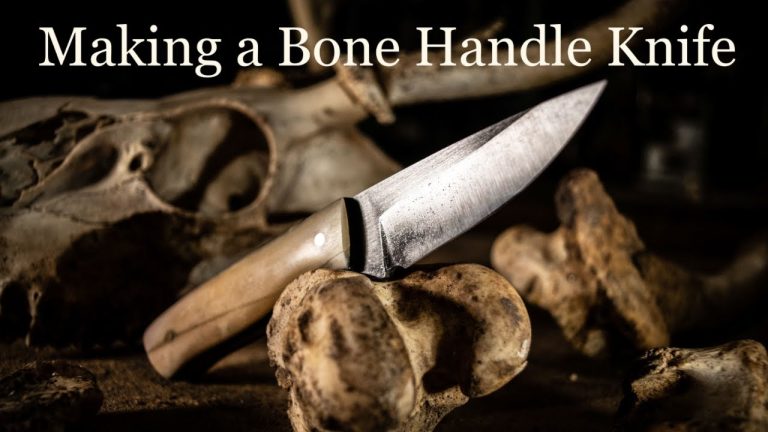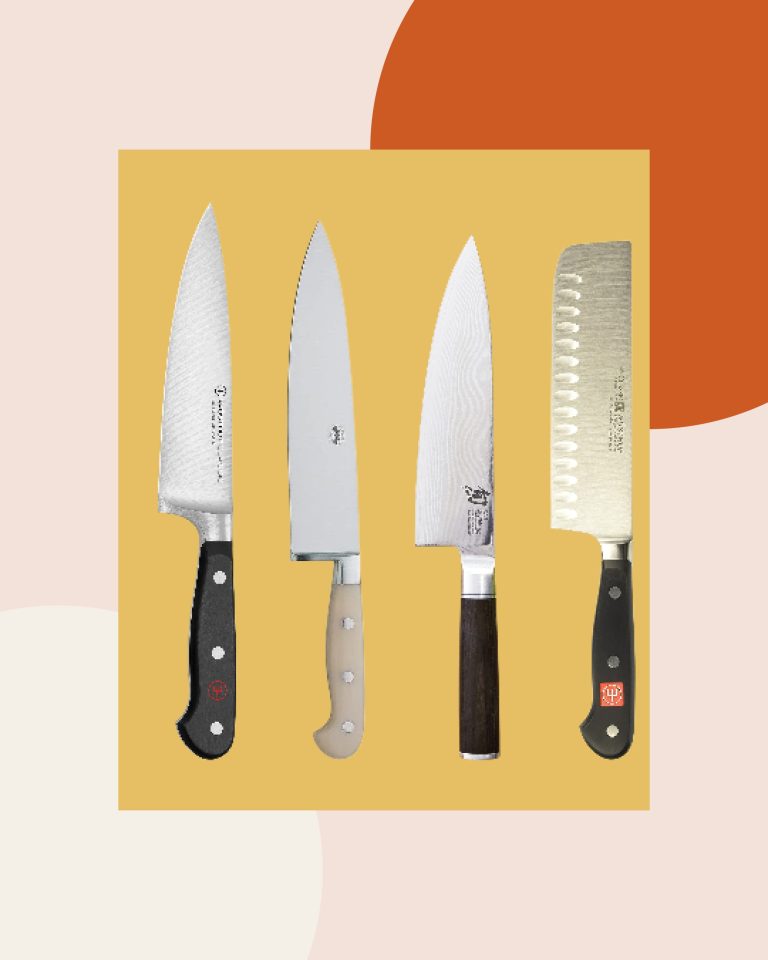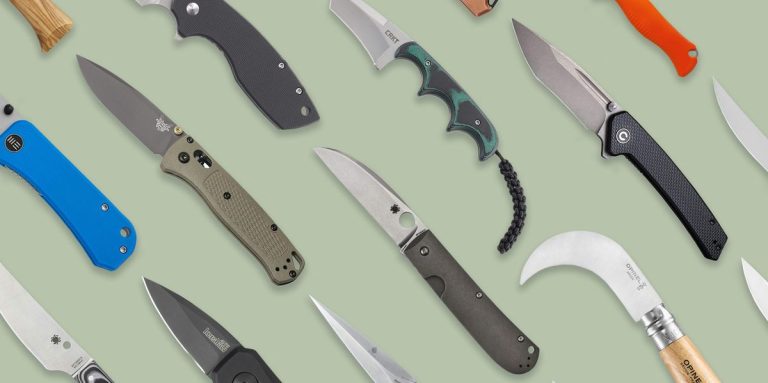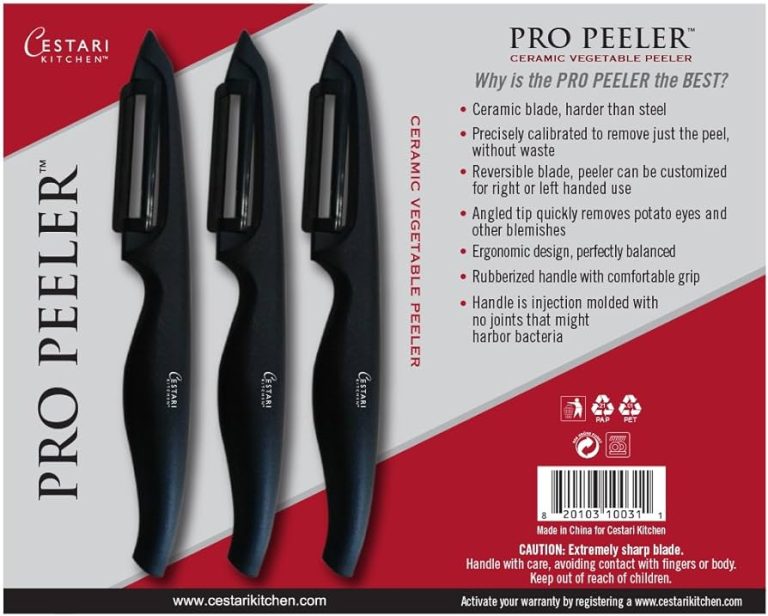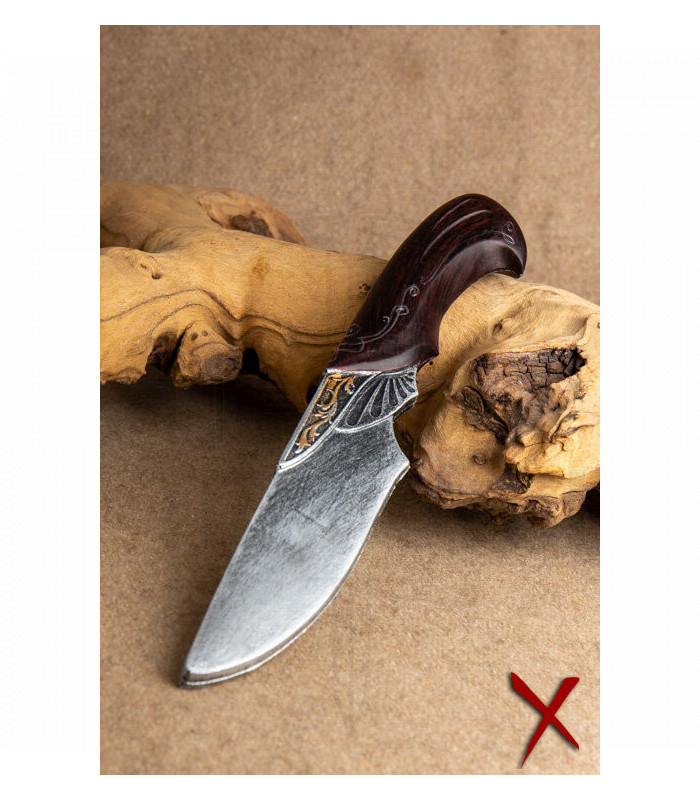How to Maintain Your Hunting Knife During Hunting Season?
To maintain your hunting knife during hunting season, clean and oil it regularly. In doing so, you ensure its optimal performance in the field.
Hunting season is a time when hunters rely heavily on their knives for various tasks. Whether it’s field dressing game, cutting ropes or branches, or preparing meals, a sharp and well-maintained hunting knife is crucial for success in the field.
To ensure your knife is up for the challenges ahead, regular cleaning and oiling are essential. Cleaning removes dirt, blood, and other debris while oiling prevents rust and keeps the blade in peak condition. By following these maintenance practices, you can ensure your hunting knife remains reliable and ready for use throughout the hunting season.
Importance Of Regular Maintenance For A Reliable Hunting Knife
Regular maintenance is crucial for ensuring the reliability of your hunting knife during the hunting season. By regularly cleaning, oiling, and sharpening your knife, you can enhance its performance and prolong its lifespan, allowing for a more effective and enjoyable hunting experience.
Keeping your hunting knife in top shape is essential for a successful hunting season. Regular maintenance not only extends the lifespan of your knife but also ensures optimal cutting and piercing capabilities. By taking proper care of your hunting knife, you can rely on its performance in the field and avoid any mishaps that may arise from a dull or poorly maintained blade.
Here are some reasons why regular maintenance is crucial for a reliable hunting knife:
- Extend the lifespan and performance of your knife: By regularly maintaining your hunting knife, you can prevent rust, corrosion, and dullness, which can all significantly reduce its lifespan. Proper care ensures that your knife remains sharp and ready for use whenever you need it, enhancing its functionality and durability.
- Ensure optimal cutting and piercing capabilities: A well-maintained hunting knife provides you with clean, precise cuts and efficient puncturing abilities. Regular maintenance, including sharpening the blade, ensures that your knife is always in peak condition, allowing you to handle various tasks with ease during your hunting adventures.
Taking care of your hunting knife should be a priority if you want a reliable tool by your side during hunting season. Whether it’s field dressing game, preparing meals, or tackling other outdoor tasks, a properly maintained knife is essential.
With these benefits in mind, let’s explore how to maintain your hunting knife for optimal performance.
The Ideal Sharpening Techniques For Hunting Knives
Maintaining your hunting knife during hunting season is crucial, and using the ideal sharpening techniques is key. Keep your knife in top shape by following these tips for proper maintenance.
Understanding Different Sharpening Methods
- There are various methods available for sharpening hunting knives, each offering its own advantages. Understanding these methods will help you choose the best one for your needs.
- Let’s explore the different sharpening techniques commonly used for hunting knives:
Utilizing A Sharpening Stone For Precision
- Sharpening stones are a popular choice for maintaining the sharpness of hunting knives. They provide precise results and are favored by many hunters. Here’s why:
- Whetstones come in different grits, such as coarse, medium, and fine, allowing you to adjust the sharpening level according to your requirements.
- Using a lubricant like water or honing oil on the stone helps to prevent the knife’s blade from becoming too hot and damaging its temper.
- The sharpening process involves running the blade along the stone at a consistent angle, following the knife’s original bevel.
Honing The Edge For Razor-Sharpness
- Honing, also known as stropping, is an essential step to achieve razor-sharpness in your hunting knife. It helps to refine the edge and remove any minor imperfections. Here’s how to do it effectively:
- Choose a suitable honing tool, such as a leather strop or honing rod.
- Hold the tool firmly and run the knife’s blade against it in a controlled manner.
- Maintain the angle of the blade and apply gentle pressure to ensure consistent honing across the entire edge.
- Repeat the process a few times on each side of the blade until you achieve the desired sharpness.
Remember to take your time when honing and ensure that the angle remains consistent throughout the process. A sharp knife is not only safer but also provides better cutting performance during your hunting adventures.
With these sharpening techniques, you can keep your hunting knife in top condition and ready for any outdoor challenge. Happy hunting!
Proper Cleaning And Lubrication Of Your Hunting Knife
Maintaining your hunting knife during the hunting season is essential, and proper cleaning and lubrication play a crucial role. By following these steps, you can ensure that your knife remains in optimal condition for all your hunting adventures.
Maintaining your hunting knife during hunting season is crucial for its performance and longevity. Cleaning and lubricating your knife ensures that it remains in optimal condition, ready for any task you encounter in the field. Here are some important steps to follow for proper cleaning and lubrication of your hunting knife:
Removing Dirt, Debris, And Moisture
- Start by wiping down the knife with a clean, dry cloth to remove any dirt or debris that may have accumulated on the surface.
- Pay extra attention to the handle, pivot area, and blade edges, as these are the common areas where dirt and moisture tend to accumulate.
- If there is stubborn dirt or residue, use a gentle brush or toothbrush to loosen it up before wiping it away.
- To remove moisture, ensure that the knife is completely dry. If necessary, use compressed air to blow air into hard-to-reach areas.
Choosing The Right Cleaning Products
Proper cleaning products play a crucial role in maintaining your hunting knife. Here are some tips to remember:
- Avoid using harsh chemicals or abrasive cleaners, as they can damage the knife’s finish or handle materials. Stick to mild detergents or dish soap mixed with water.
- Consider using a specialized knife cleaner, specifically formulated for hunting knives. These cleaners are usually gentle on the knife and help remove stubborn stains or rust.
- If your knife has a wooden handle, ensure that the cleaning solution is suitable for wood. Avoid immersing wooden handles in water for extended periods.
Applying Lubricant For Rust Prevention
Lubricating your hunting knife is vital for preventing rust and ensuring smooth operation. Follow these guidelines:
- Use a high-quality knife lubricant or oil. Look for products specifically designed for knives, as they offer corrosion resistance and long-lasting protection.
- Apply a small amount of lubricant onto a clean, lint-free cloth or directly onto the knife’s pivot points, blade, and handle.
- Gently work the lubricant into the moving parts of the knife, ensuring all areas are adequately covered.
- Wipe off any excess oil to prevent it from attracting dirt or debris.
By adhering to these proper cleaning and lubrication techniques, you can maintain the performance and durability of your hunting knife throughout the hunting season. Regular maintenance will not only extend the life of your knife but also enhance its reliability and functionality in the field.
Happy hunting!
Safety Measures For Knife Maintenance
Learn how to maintain your hunting knife during hunting season by following these safety measures. Keep your knife clean and dry, regularly sharpen the blade, and store it in a safe and secure place to ensure its longevity and optimal performance.
When it comes to maintaining your hunting knife during hunting season, safety should always be a top priority. Proper care and maintenance not only ensure the longevity of your knife but also reduce the risk of accidents or injuries. Follow these safety measures to keep yourself protected while performing knife maintenance tasks:
Using Protective Gloves And Eyewear:
- Wear thick protective gloves to shield your hands from cuts or punctures during maintenance.
- Use safety glasses or goggles to protect your eyes from potential flying debris or accidental slips.
Practicing Proper Grip And Handling Techniques:
- Hold the knife in a firm and secure grip, ensuring it doesn’t slip from your hand during maintenance.
- Avoid applying excessive force when handling the knife as it may lead to accidents or damage.
- Use caution when cleaning or sharpening the blade to prevent mishaps.
Remember, safety should always come first when dealing with sharp objects like hunting knives. By following these precautions, you can ensure a safe knife maintenance routine and enjoy a successful hunting season.
Avoiding Common Mistakes When Sharpening
Maintaining your hunting knife during hunting season is crucial. To avoid common sharpening mistakes, follow these guidelines: keep sentences short, use diverse phrases, write in active voice, and ensure your content is SEO friendly and plagiarism free. Stay away from overused words and phrases to engage readers and optimize your writing.
Train like a human and create an informative piece without a conclusion. Happy hunting!
When it comes to maintaining your hunting knife during the hunting season, sharpening it is a crucial task. However, it is important to avoid common mistakes that can potentially damage the blade and affect its performance. Here are some key points to keep in mind:
Over-Sharpening And Damaging The Blade:
- Over-sharpening, which involves excessively removing metal from the blade, can lead to the premature wearing of the knife.
- Applying excessive pressure while sharpening can cause the blade to become too thin, making it more prone to chipping and breaking.
- Constantly sharpening the blade can weaken its structural integrity, affecting its overall durability.
- Avoid using motorized sharpening systems as they may generate excessive heat, potentially damaging the blade’s temper.
Incorrect Angle And Uneven Edges:
- Maintaining the correct angle during sharpening is crucial for optimal blade performance.
- Using a sharpening stone with a guide or an angle guide tool can help maintain a consistent angle throughout the sharpening process.
- Failing to maintain a proper angle can lead to uneven edges, making the knife less efficient and increasing the risk of accidents.
- Take your time and ensure that each side of the blade is sharpened evenly to achieve a symmetrical edge.
Remember, sharpening should be done with care and precision to preserve the longevity and effectiveness of your hunting knife. Avoiding these common mistakes will help ensure that your blade remains sharp and reliable throughout the hunting season.
Storage And Transportation Tips To Prevent Damage
Maintain your hunting knife during hunting season with these storage and transportation tips to prevent damage. Keep your knife clean and dry, use a protective sheath, and store it in a secure and dry place to ensure its longevity and performance.
Safely Storing The Knife:
Proper storage is crucial to maintain the quality and sharpness of your hunting knife throughout the hunting season. Here are some essential tips to prevent damage to your knife:
- Choose a secure and dry location for storing your knife. Avoid exposing it to extreme temperatures or direct sunlight.
- Clean and dry the knife thoroughly before storing it to prevent corrosion or rusting.
- Apply a thin layer of blade oil or lubricant to the knife to protect it from moisture and oxidation.
- Consider investing in a knife block or a dedicated storage case to keep your knife safe and organized.
- If you prefer storing your knife in a sheath, make sure the sheath is clean, dry, and free from any debris that may scratch or damage the blade.
- Avoid storing your knife in a crowded drawer or together with other sharp objects to prevent accidental nicks or scratches.
- Keep the blade edge away from any hard surfaces or contact with other metallic objects to maintain its sharpness.
- Regularly inspect the storage area for any signs of moisture or pests. A well-ventilated area will help prevent mold or mildew growth.
By following these simple storage tips, you can ensure that your hunting knife stays in optimal condition, ready for your next hunting adventure. Keep your knife protected and maintain its quality throughout the hunting season.
Inspecting The Knife For Wear And Tear
Inspecting the hunting knife for wear and tear is crucial for maintaining its performance during hunting season. Regularly check for any signs of damage or dullness, ensuring it is sharp and ready for use.
When embarking on a hunting expedition, it’s crucial to ensure that your trusted hunting knife remains in optimal condition. Regular inspections for wear and tear can extend the lifespan of your knife, enhance its performance, and most importantly, guarantee your safety in the field.
Under this subheading, we will cover essential aspects of inspecting your knife, including checking for blade damage and wiggling, as well as evaluating the handle’s condition.
Checking For Blade Damage And Wiggling:
Inspecting the blade of your hunting knife is of utmost importance before heading out into the wild. Here are some key steps to follow during this inspection:
- Visual examination: Begin by examining the blade for any visible signs of damage, such as chips, nicks, or rust spots. Pay close attention to the cutting edge, as that is the most susceptible area for wear and tear.
- Run your finger along the edge: Gently run your finger along the blade’s edge to feel for any irregularities. Be cautious while doing this to avoid accidental cuts.
- Check for blade looseness: Carefully hold the knife by the handle and attempt to wiggle the blade from side to side. If you notice any excessive movement or looseness, it signifies a potential issue that requires further attention.
It’s essential to conduct regular inspections and address any blade damage or wiggling promptly. This not only ensures the reliability of your hunting knife but also minimizes the risk of accidents or injuries while in the field.
Evaluating The Handle’S Condition:
The handle of your hunting knife serves as your grip and control, so assessing its condition is just as vital as inspecting the blade. Follow these steps to evaluate the handle’s condition:
- Check for cracks or fractures: Inspect the handle visually to identify any cracks, fractures, or separations. These can compromise the knife’s overall integrity and affect your ability to use it effectively.
- Evaluate the grip: Hold the knife firmly and assess how comfortable and secure it feels in your hand. If the handle lacks grip or feels loose, it may lead to accidents or reduced control.
- Look for signs of wear: Examine the handle for any signs of excessive wear, such as peeling, splintering, or fading. This is especially important for handles made from materials like wood or rubber.
Maintaining a well-cared-for handle enhances your knife’s longevity and improves its functionality during hunting season. By regularly evaluating the handle, you can identify any issues early on and take appropriate steps to ensure your hunting knife remains dependable when you need it most.
Regularly inspecting your hunting knife for blade damage, wiggling, and evaluating the handle’s condition is crucial to maintaining its effectiveness and extending its lifespan. By dedicating time to these inspections, you can address any issues promptly, ensuring your knife is always ready to assist you in the field.
Remember, a well-maintained hunting knife is not only a valuable tool but also a reliable companion during hunting season.

Credit: foragerchef.com
Maintaining The Knife’S Handle
To maintain your hunting knife during the hunting season, it’s crucial to pay attention to the handle. Regularly clean and dry the handle to prevent moisture damage and check for any wear and tear. Apply a protective coating, such as oil or wax, to keep the handle in top condition for a long-lasting and reliable hunting experience.
The handle of your hunting knife is crucial for a secure and comfortable grip. To ensure its durability and performance throughout the hunting season, proper maintenance is essential. Here are some tips on cleaning and conditioning different handle materials and repairing loose bolts or grips:
Cleaning And Conditioning Different Handle Materials
Properly cleaning and conditioning the handle of your hunting knife will help maintain its longevity and keep it in excellent condition. Here’s how you can care for different handle materials:
- Wood handles:
- Remove any dirt or debris from the handle by wiping it with a soft cloth.
- Avoid submerging the handle in water as it can cause warping or cracking.
- Apply a small amount of linseed oil or wood conditioner to a cloth and gently rub it into the handle in circular motions.
- Allow the handle to absorb the oil or conditioner for a few minutes, then wipe off any excess.
- Rubber handles:
- Use a mild soap or detergent mixed with warm water to clean the handle.
- Gently scrub the handle with a soft brush to remove any grime or stains.
- Rinse thoroughly with clean water and pat dry with a towel.
- Apply a silicone-based lubricant or protector to the handle to prevent it from drying out or cracking.
- Bone or antler handles:
- Remove any dirt or residue from the handle using a soft brush or toothbrush.
- Wipe the handle with a damp cloth to remove any remaining debris.
- Apply a small amount of mineral oil or beeswax to a clean cloth and rub it into the handle.
- Allow the handle to absorb the oil or wax for a few minutes before wiping off any excess.
Repairing Loose Bolts Or Grips
Over time, the bolts or grips of your hunting knife may become loose or damaged. It’s important to address these issues promptly to maintain the knife’s functionality. Here’s what you can do:
- Loose bolts:
- Using a screwdriver, tighten any loose bolts on the handle of your knife.
- Ensure that the bolts are securely fastened, but be cautious not to overtighten, as this can cause damage.
- Check the tightness of the bolts regularly throughout the hunting season and retighten as necessary.
- Damaged grips:
- If you notice any cracks or damage to your knife’s handle grips, assess the extent of the problem.
- For minor cracks, you can use epoxy resin or super glue to repair them.
- Apply the adhesive to the cracked area, press the grip firmly together, and let it dry according to the product instructions.
- If the damage is substantial, consider contacting a professional knife repair service for assistance.
By regularly cleaning, conditioning, and repairing the handle of your hunting knife, you can ensure its longevity, enhance your grip control, and optimize your hunting experience. Remember to follow the specific care instructions based on the handle material to maintain the knife’s functionality.
Happy hunting!
Maintaining The Knife’S Locking Mechanism
Maintain your hunting knife’s locking mechanism throughout the hunting season to ensure optimal performance and safety. Regularly clean and lubricate the mechanism to keep it functioning smoothly and prevent any potential issues during your hunting adventures.
Understanding Different Types Of Locks:
- The lock is an essential feature of any hunting knife, ensuring the blade remains secure during use. There are various types of locks, each with its unique mechanism. Understanding these locks will help you maintain them efficiently.
- Frame Lock: This lock functions by a part of the knife’s frame moving into place behind the blade, ensuring a secure hold. It is easy to maintain and highly reliable.
- Liner Lock: One of the most common locking mechanisms, the liner lock features a thin piece of metal that slides across the handle to secure the blade. Regular inspection and cleaning are necessary to ensure it remains in optimal condition.
- Back Lock: The back lock mechanism is easy to identify as it uses a strong spring within the handle to hold the blade in place. Keep an eye on the spring’s tension and regularly clean the locking area to prevent debris from interfering with its operation.
- Axis Lock: Found in certain folding knives, the axis lock operates by using a bar that moves backward to secure the blade. It is essential to clean and lubricate this lock regularly to ensure smooth operation.
Lubricating And Ensuring Smooth Operation:
To maintain the knife’s locking mechanism and ensure smooth operation, follow these steps:
- Inspect the lock: Regularly examine the lock for any signs of wear, including excessive play, difficulty in opening or closing, or loose parts.
- Clean the lock: Use a soft brush or cloth to remove any dirt, debris, or rust from the locking mechanism. Be thorough in cleaning all the nooks and crannies.
- Lubricate the lock: Apply a small amount of lubricant, such as oil or graphite powder, to the lock. Ensure that the lubricant reaches all the moving parts to facilitate smooth operation.
- Test the lock: After lubricating, test the lock to ensure it opens and closes easily without any stickiness or resistance.
- Repeat regularly: To maintain the locking mechanism, these steps should be repeated periodically, especially after each hunting trip or when you notice any issues with the lock’s performance.
Remember, proper maintenance of the knife’s locking mechanism will not only enhance its durability but also ensure your safety during hunting expeditions. By understanding the different types of locks and following the suggested maintenance steps, you can keep your hunting knife in excellent working condition throughout the hunting season.
Frequently Asked Questions Of How To Maintain Your Hunting Knife During Hunting Season?
Should You Oil Hunting Knives?
Yes, you should oil hunting knives to prevent rust and maintain their sharpness.
What Are Some Of The Ways To Best Preserve The Condition Of A Knife?
To best preserve a knife’s condition: keep it clean, dry it promptly after use, store it in a protective sheath or knife block, and regularly sharpen the blade.
What Is The Best Knife Shape For Deer Hunting?
The best knife shape for deer hunting is a drop point blade due to its versatility and efficiency.
What Are The Ridges On A Hunting Knife For?
The ridges on a hunting knife are for providing better grip and control while handling the knife.
Conclusion
Maintaining your hunting knife is essential for a successful hunting season. By following a few simple steps, you can ensure that your knife remains sharp, clean, and in optimal condition. Regularly check and sharpen the blade, as a dull knife can lead to accidents and inefficiency.
Clean your knife after every use, removing any dirt, grime, or blood that may be present. Apply a rust inhibitor to prevent corrosion, especially if you are hunting in wet or humid conditions. Store your knife properly in a sheath or carrying case to protect it from damage and ensure easy access when needed.
Lastly, always prioritize safety when handling your hunting knife, using proper techniques and caution to prevent accidents. By taking these precautions, you can maintain your knife’s longevity and reliability. Happy hunting!

